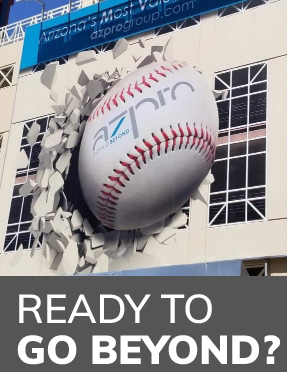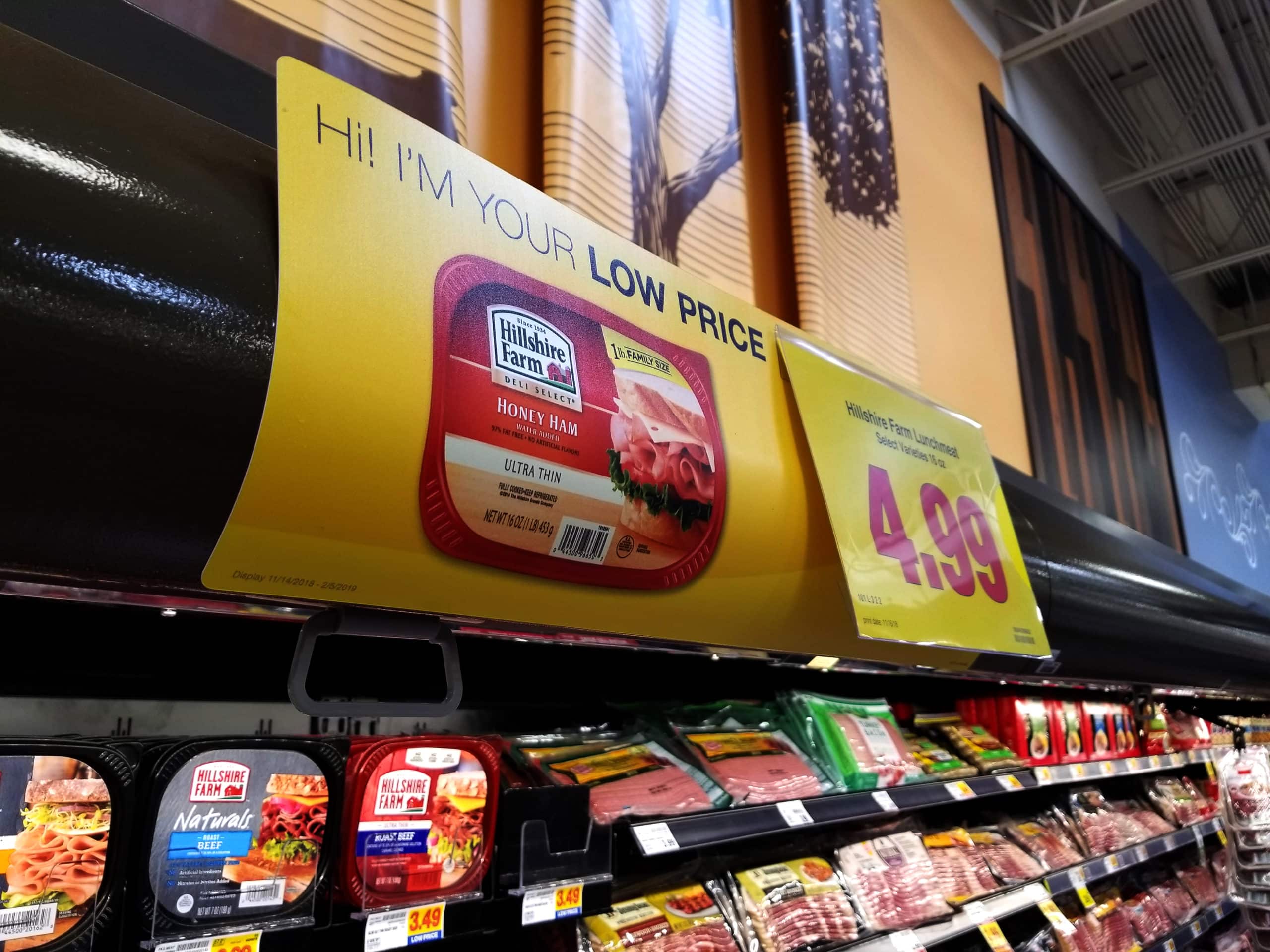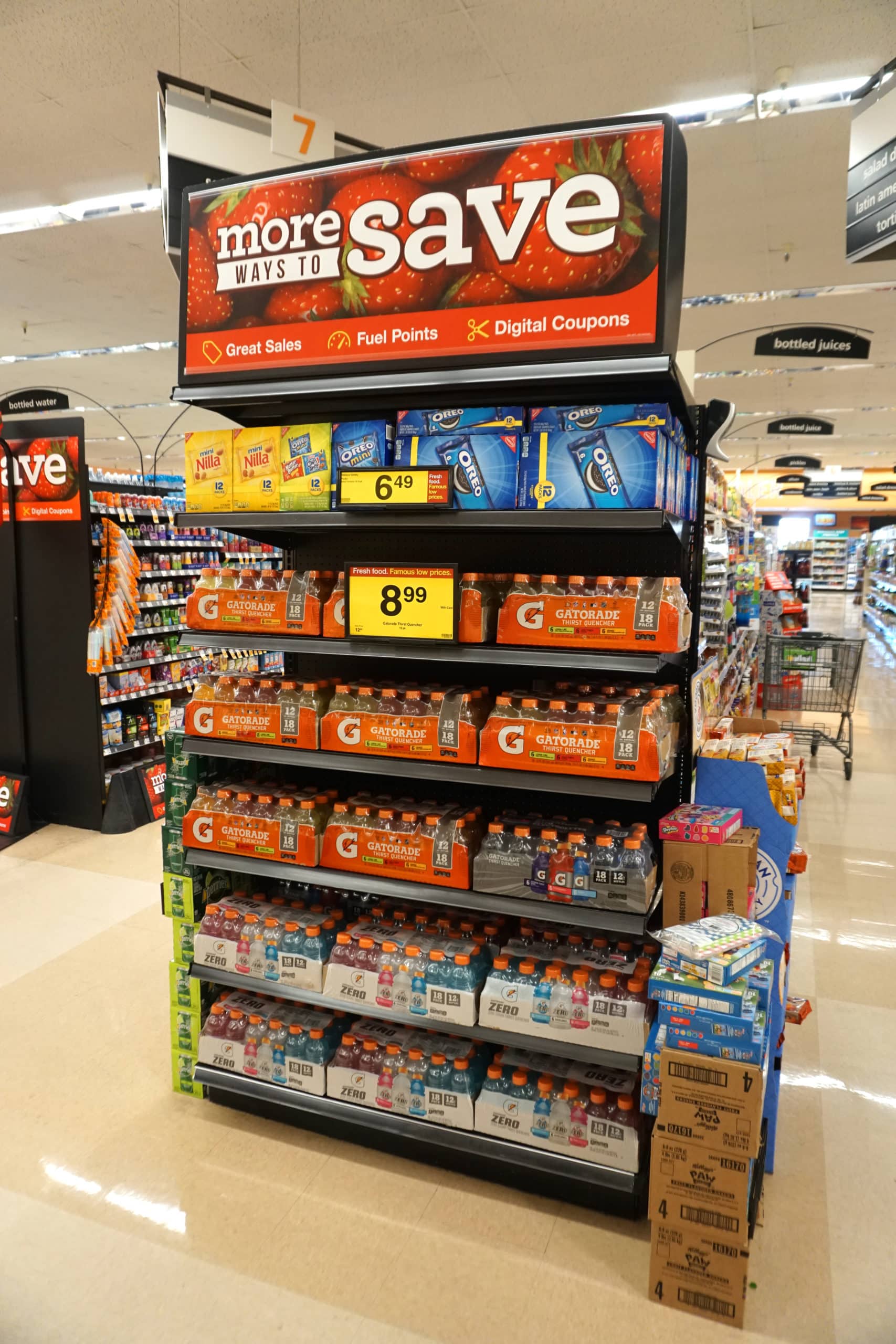In 2020, consumers made 82% of retail purchases in a physical store. Despite the continuing development of online shopping through sites like Amazon, companies continue to profit from investing in displays.
When you place a product or service in a retail setting, you expose it to people already in the purchasing mindset. Use the proper techniques to grab their attention, and you’re one step closer to another buyer.
In this blog, we’ll look at the following questions about retail displays:
- What are displays in stores called?
- What are the different types of displays in retail?
- What are the most common types of displays?
- How long do in-store displays last?
- What is a good display for a retail store?
What are Displays in Stores Called?
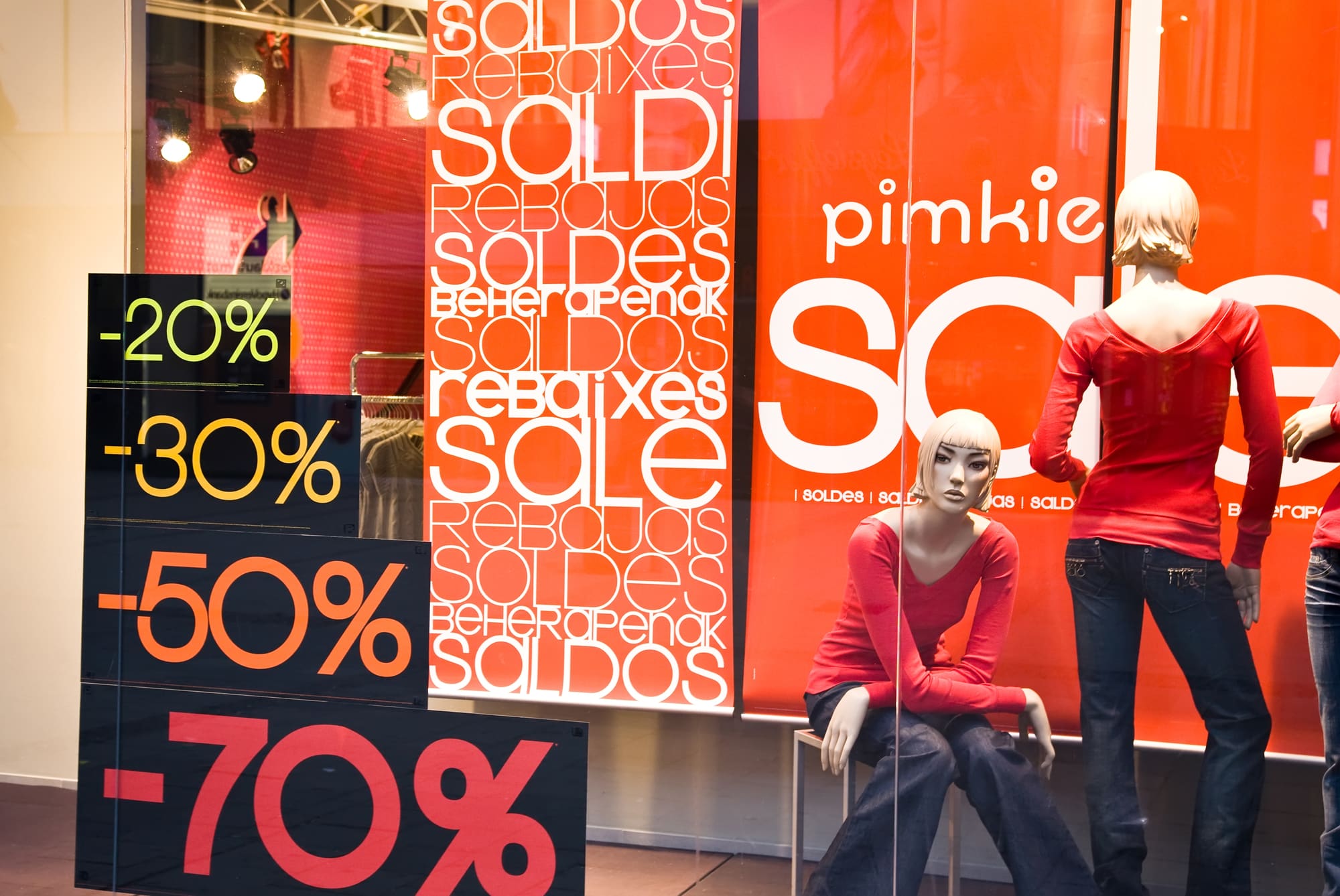
Store displays are called Point of Purchase (POP) or Point of Sale (POS) displays. They are custom marketing tools used to advertise a product or service to consumers. They’re designed to catch the consumer’s attention while they’re already in the purchasing mindset.
Because of this, POPs are placed in high-traffic settings like retail and grocery stores. Understanding the different types of displays and which best fit your specific product or service is essential.
What are the Different Types of Displays in Retail?
Endcaps are the product displays at the end of aisles, usually occupying the entire shelf space. These consist of items that retailers want to highlight to their consumers as they’re doing their usual walkthrough of the aisles.
Window displays are used to draw consumers into the store. They use design and messages to entice buyers to enter and make a purchase.
Point-of-sale displays are found at the check-out and on tabletops. They’re often placed next to the cash register to encourage last-minute purchases. The consumer is exposed to these small, affordable items and makes an impulse buy as they unload the other things they’re purchasing.
Electronic/interactive displays can offer consumers an interactive shopping experience. They may be in the form of touch screens, slideshows, virtual reality, and other interactive elements. This is best paired with printed signage.
Floor stands may be used if the product or service doesn’t need as much advertising space. These are more depending on the actual message of the brand than the physical display of it. They can be placed in front of the store, in the middle of aisles, or near the check-out, making their location versatile and interchangeable.
Wall displays use shelves, banners, posters, and other materials that can be mounted or hung on a wall to advertise products and services.
What are the Most Common Types of Retail Displays?
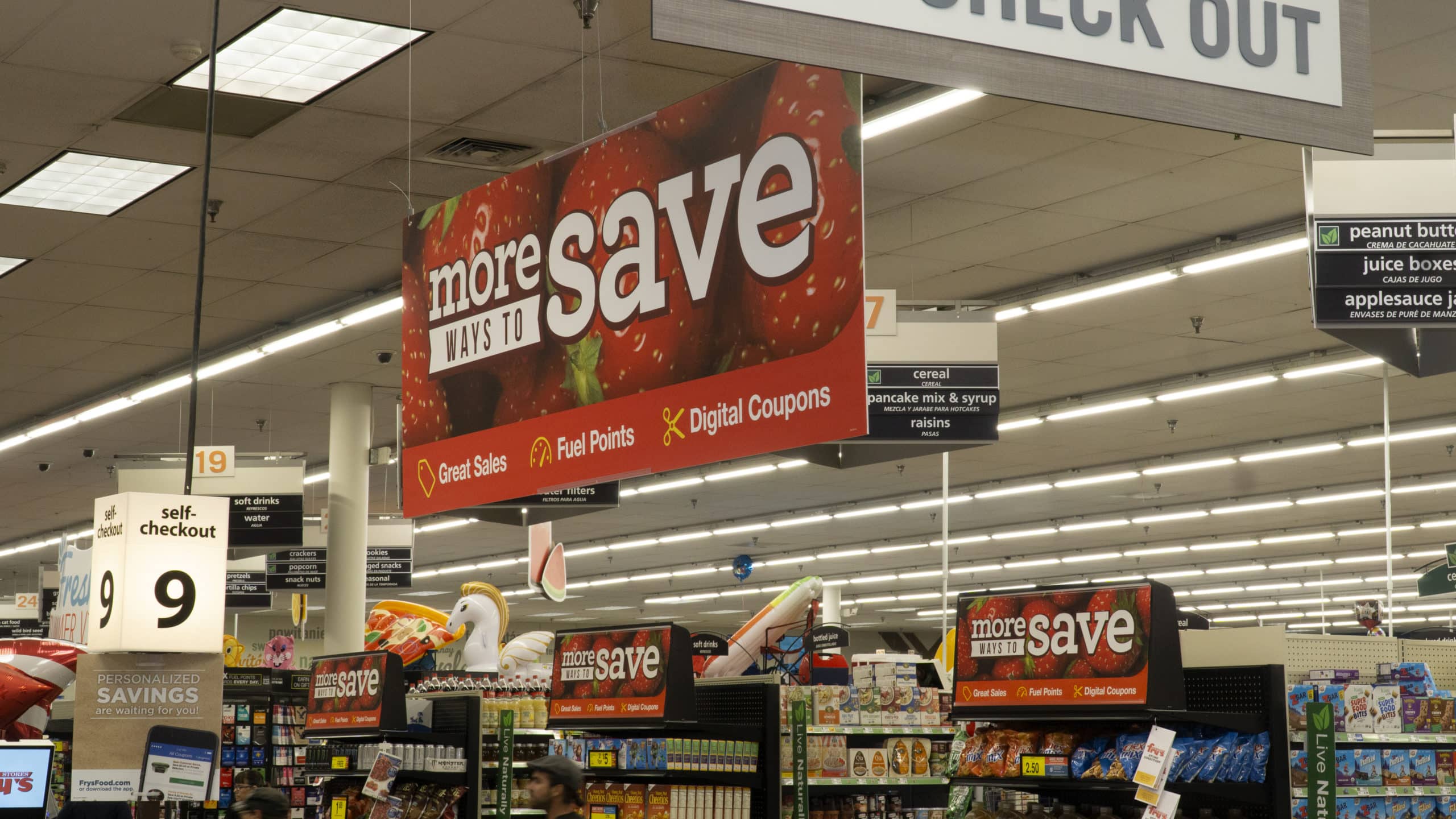
The displays that come to mind first are also the most commonly used by businesses to promote their products and services. These include clothing and furniture displays, standalone/POP displays, and store shelving displays.
Clothing displays use mannequins to showcase outfits. They combine color schemes and patterns that complement each other, typically on figures that make them appear the most flattering.
Furniture displays are similar in that they are set up to draw consumers in. Professional interior designers are often brought in to put together different furniture pieces to create an attractive set-up.
Standalone or POP displays are meant to catch the attention of consumers passing by. They can advertise a specific product or service and sometimes appear entirely separate from the rest of the store (kiosks, entire aisles, etc.)
Store/Retail shelving displays are perhaps the most common of all displays. You’ll see this type of setup at any retail or grocery store. These displays can be set up in aisles or block shelves between or at the center of aisleways.
How Long Do In-Store Displays Last?
While it depends on the type of display, a well-maintained display can last up to one to three years on a retail floor. POP or point-of-purchase displays can be temporary, semi-permanent, and permanent. These determine the sturdiness and lifespan of the displays, with permanent displays lasting three years or more.
What is a Good Display for a Retail Store?
Endcaps, entryway displays, window displays, and free-standing displays tend to have the most exposure to consumers. For smaller items, consider dump bins and display tables to avoid drowning them out with other products.
Regardless of the type of display you choose to go with, it’s important to weigh out several key factors that heavily affect their ability to draw in consumers.
- Good lighting. Make sure your display is in a well-lit spot. This allows it to catch the eye of consumers as they pass by.
- Categorization. People are automatically attracted to things categorized, whether by color, size, or shape. Use these to your advantage when setting up a display. For example, a vitamin company can organize its products based on the targeted audience (men, women, children, prenatal, etc.)
- Simplicity. Don’t overdo a display. When there’s too much going on, the complexity can turn people off. They may not have the attention span to fully understand what’s being advertised if there are too many images and messages. Keep it simple: What are you trying to sell? What’s the message? How does it benefit the consumer?
- Clear messaging. While there may be much to say about your product or service, consumers only take a few seconds to examine a display. To pull them in, you need to provide a short, clear message that communicates what’s being sold and how it will benefit them.
AZPRO Provides Design, Print, and Installation for Your POP Needs
Our team is dedicated to increasing your brand’s exposure. We provide custom graphics and signage to our customers, including wall wraps, hanging signs, menu boards, and more. Contact us today to learn more about what we do and how we can serve your business.
